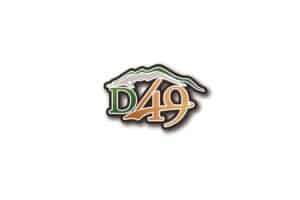On March 12, the administration at El Paso County Colorado School District 49 announced the suspension of all district schools and programs until March 30 due to the new coronavirus pandemic. At that time, the district would begin an electronic learning schedule through April 30. However on April 16, the district announced e-learning would continue through the remainder of the school year. With no in-person contact possible, counselors in D 49 have had to find creative ways to connect with students in need of support.Kim Boyd, director of community care for D 49, said the districtís leadership started having meetings about how to maintain that contact if the schools closed completely or went to an e-learning format.ìI felt Peter Hilts (D 49 chief education officer) was well above the curve,î she said. ìBefore spring break, each of us in different departments had talks about what this would look like and then over spring break is when we started hearing of closings.îBoyd said she was concerned going into the month of April since it is one of the three months with the highest rate of suicide completions in Colorado so she had already been gearing up to keep a closer eye on the students.Her department created an electronic counseling guidance document to help the counselors figure out how to support students with their mental health, not just for students they have regular contact with but also for students who feel they need support, Boyd said.She said she tasked the counselors to create a document on Google Docs with the names of the students they would normally check in with if school were in session. Boyd said she and her team then had to figure out how to handle student contact virtually to maintain everyoneís privacy and protect both the students and the counselors.ìNormally, when a student comes to the counselor, they have the protection of having a window in that room or the door is ajar,î she said. ìWe had to figure out how to protect the students and the counselor from accusations in a virtual world.îThe solution was to have public virtual meetings with at least three people involved in each meeting, including the student, Boyd said. That could be either two counselors, a counselor and a teacher, or a parent and the counselor to ensure more than one adult was involved in each meeting, she said.There are times when private meetings are necessary, like when a student has something they do not want to discuss in front of a lot of other people, Boyd said. In that instance, the counselor would set up a private virtual meeting which requires the consent from the parents for their student to be involved, she said. That consent indicates the time of the meeting and the format or virtual meeting program used so the parents always know when and where the meeting is taking place, Boyd said.ìWe know there are families struggling with finances right now,î she said. ìThey are worried about the electric bill or how to get food. Those are high-stress situations and students struggle to concentrate on things when they do not know if they will have electricity that next hour.îBoyd said the district has a community care page on the D 49 website that lists resources for people who need help for those high-stress situations. The page also has free social-emotional learning activities that parents can do with their kids at home, including how to talk to their child about COVID-19 or how to work with teenagers during this time, she said. The page is regularly updated.ìWe are concerned about the staff, too,î she said. ìEveryone is feeling relatively disconnected so we are helping them find ways to make sure they are having contact. Many schools have started mini groups, like the English department on a Zoom meeting once or twice per week. I do a supervisor check in twice per week.îThe schools are also trying to do activities for the students that promote connectedness, like having a Spirit Week where students log on to a meeting wearing a mask, Boyd said. They are trying to organize different things based on their schoolís culture, with the main goal being to get everyone feeling less isolated, she said.ìI attend a weekly statewide practice meeting with other mental health leaders of schools throughout the state,î Boyd said. ìI shared our e-counseling guidance document and several schools around the state adopted that.îHer department is also working on how to do grief response virtually, which Boyd said she shared at the statewide meeting.ìWe are trying to do things on a variety of levels,î she said. ìWe are working on how to keep teachers and staff connected with each other, how to keep teachers connected to students to help maintain that relationship, helping teachers keep an eye on the safety of their students at home, helping keep students connected with each other and keeping the counselors in contact with the students already on our radar that need our support.îBoyd said it is clear they are not able to maintain the same level of connectedness with students and staff, but the district is committed to caring for its community and will continue to be available for students and staff who feel they need additional support.ìIf you can try to connect with two people every day so you feel like people care about you and they know you care about them, I think that would really ease some of this isolation,î she said.https://d49.org/communitycare




